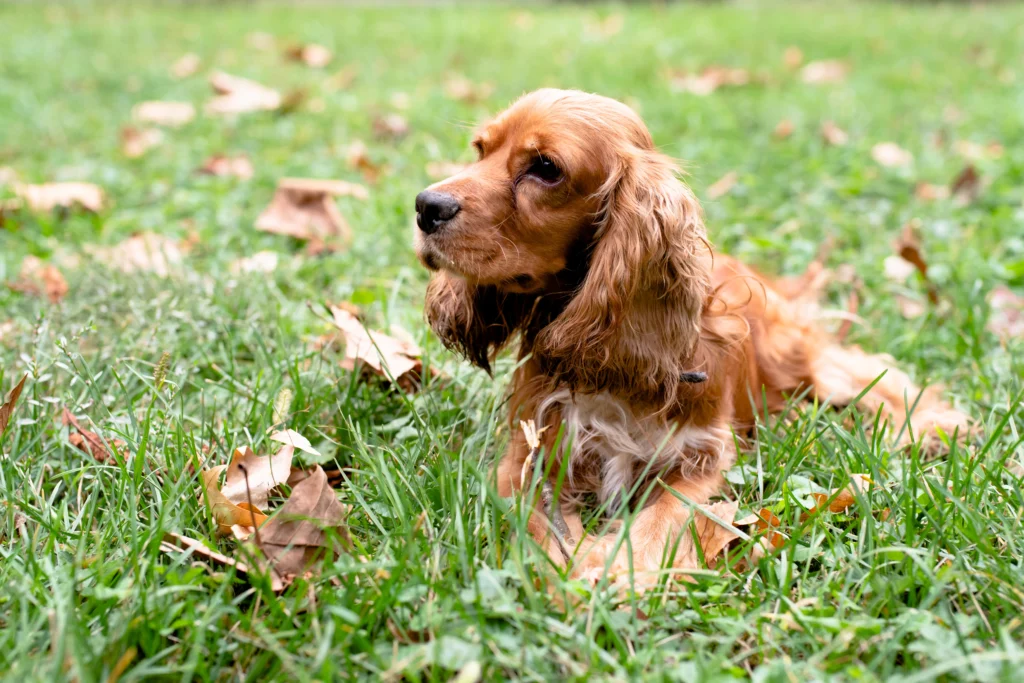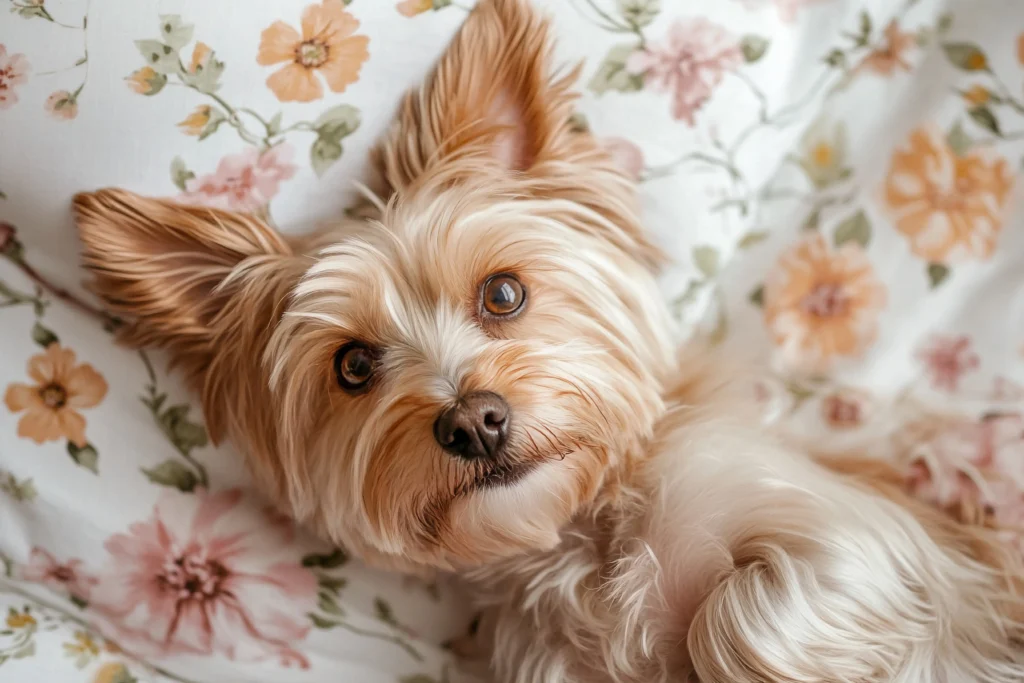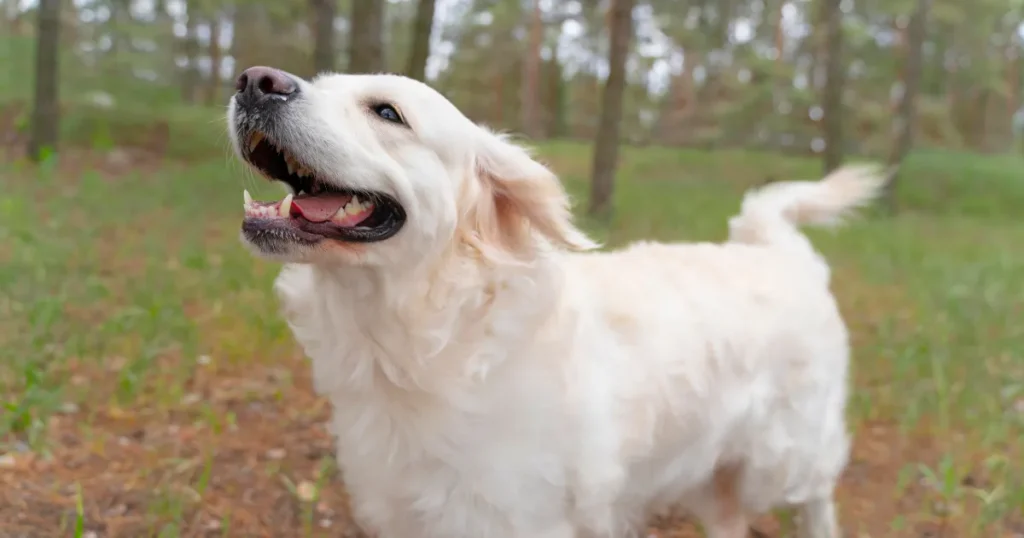Table of Contents
- Understanding What Makes a Dog Breed Family-Friendly
- The Science Behind Dog Affection and Human Bonding
- Golden Retrievers and Labradors: The Ultimate Family Companions
- Gentle Giants: Large Friendly Dog Breeds
- Small but Sweet: Compact Breeds Perfect for Families
- Friendliest Dog Breeds for First-Time Owners
- Hypoallergenic Options: Affectionate Breeds for Allergy Sufferers
- Training Tips for Nurturing Friendly Behavior
- Health Considerations When Choosing a Family Dog
- FAQ
Finding the right dog for your family can make your home a place of love and friendship. Choosing the friendliest dog breeds means more than just picking a cute pet. It’s about welcoming a new family member who will bring joy, comfort, and love without condition.
Understanding the unique traits of different dog breeds is key to finding the most friendly ones. Each breed has its own personality, energy level, and temperament. These can fit perfectly with your family’s lifestyle.
Whether you live in a small apartment or a big house, there’s a friendly dog breed for every family. This guide will help you find the perfect dog for you. It’s all about finding a four-legged friend who will fit right in.
Key Takeaways
- Family-friendly dogs provide emotional support and companionship
- Breed temperament plays a crucial role in selecting the right dog
- Consider your living space and lifestyle when choosing a breed
- Early socialization is key to developing a friendly dog
- Size and energy levels vary across different friendly dog breeds
Understanding What Makes a Dog Breed Family-Friendly
Choosing the right dog for your family is more than just picking a cute pet. The best social dog breeds have traits that make them great for families. Not all dogs are good for families.
Looking for top affectionate dog breeds? There are key factors to consider for family life. Knowing these traits helps you choose the right dog for your family.
Key Traits of Family-Oriented Dogs
Gentle and friendly dog breeds have important qualities. They include:
- Patience with children
- Low aggression levels
- Adaptable temperament
- High emotional intelligence
- Moderate energy levels
The Role of Temperament in Family Dogs
A dog’s temperament is key for family life. Stable and predictable personalities are essential for a peaceful home. Breeds with balanced temperaments are more reliable and fit well into family life.
Impact of Early Socialization
Early socialization is crucial for a dog’s future behavior. Puppies need to meet different people, animals, and places. This helps them grow into confident, friendly dogs.
“A well-socialized dog is a happy dog, and a happy dog makes a happy family.”
When picking a family pet, think about these important aspects of dog behavior. This ensures you find the perfect match for your home.
The Science Behind Dog Affection and Human Bonding
Choosing the right dog for first-time owners is more than just looking at breed characteristics. Science shows a deep connection between humans and dogs. This connection explains why some breeds are more loving and affectionate.
The bond between humans and dogs is rooted in our shared history. Oxytocin, known as the “love hormone,” is key in forming strong bonds. When we interact with dogs, our brains and theirs release oxytocin. This creates a strong bond between us.
- Dogs have been bred for companionship for thousands of years
- Genetic changes have made some breeds more social and loving
- Brain chemistry helps create deeper emotional bonds with certain breeds
Studies show that friendly dog breeds have certain genetic traits. These traits affect their temperament and how they connect with humans. Breeds like Golden Retrievers and Labradors are known for their emotional smarts.
Dogs have become amazing companions through domestication. They understand our emotions and form deep bonds with us. They are more than pets; they are part of our families.
“Dogs are not just animals, but emotional partners who have evolved alongside humans for thousands of years.” – Dr. Brian Hare, Canine Cognition Expert
For those getting their first dog, knowing this science helps. It helps you pick a breed that will connect with you deeply.
Golden Retrievers and Labradors: The Ultimate Family Companions
Golden Retrievers and Labrador Retrievers are top picks for families. They are known for their great social skills and loving nature. This makes them perfect for homes with kids.
These two dogs are often chosen by families looking for friendly pets. They are gentle and easy to get along with, unlike some other breeds.
Golden Retriever Characteristics
Golden Retrievers are great family pets because of their amazing traits:
- Incredibly patient with children
- Soft, gentle mouth and calm demeanor
- Intelligent and easy to train
- Consistently ranked among top family-friendly breeds
Labrador Retriever Personality Traits
Labradors are known for their friendly nature. They are big dogs but very friendly. Their key traits include:
- Enthusiastic and playful temperament
- Strong bond with family members
- Excellent with kids and other pets
- Adaptable to various living environments
Training and Exercise Needs
Both breeds need regular training and exercise. Are small dogs friendlier than big dogs? No, size doesn’t matter when it comes to friendliness. They need daily walks, playtime, and training to stay happy and healthy.
Future owners should be ready for dogs that love to play and follow routines. Regular exercise keeps them from getting bored and supports their friendly nature.
Gentle Giants: Large Friendly Dog Breeds
Many people think only small dogs are affectionate. But, large dogs can be just as loving. They often surprise families with their kind hearts and great companionship.
Large dog breeds are not just big; they are also gentle. Newfoundlands, Great Danes, and Saint Bernards are perfect for families. Their size might look scary, but they are really soft and love people a lot.
- Newfoundlands: Known as “nanny dogs” for their protective nature
- Great Danes: Gentle giants with sweet, calm dispositions
- Saint Bernards: Famously loving and patient with children
These big dogs can even live in apartments if they get enough exercise. They are calm and great for families living in small spaces.
| Breed | Temperament | Apartment Suitability |
| Newfoundland | Extremely Gentle | Good with Proper Exercise |
| Great Dane | Calm and Loving | Moderate Apartment Compatibility |
| Saint Bernard | Patient and Affectionate | Requires Space |

When looking for dogs that love people, don’t ignore the big ones. They show that size doesn’t matter when it comes to love. Their gentle nature and desire to be with their families make them amazing friends.
Small but Sweet: Compact Breeds Perfect for Families
Finding the right dog for your family doesn’t always mean choosing a large breed. Small dogs can be some of the best companion dog breeds. They offer big love in a compact package. These pint-sized pups bring immense joy and loyalty to households of all sizes, especially those living in apartments or smaller homes.
Dogs that love human interaction come in all shapes and sizes. Compact breeds often excel at forming deep connections with their families. They prove that great things truly do come in small packages.
Apartment-Friendly Options
When searching for loyal and friendly dog breeds suitable for smaller living spaces, several standout options emerge:
- Cavalier King Charles Spaniel: Gentle and adaptable
- Pug: Playful and compact
- Bichon Frise: Cheerful and low-shedding
- French Bulldog: Calm and affectionate
Energy Levels and Exercise Requirements
Small breeds have varying energy levels. Some require minimal exercise, while others need regular activity to stay healthy and happy. Matching a dog’s energy to your lifestyle is crucial for creating a harmonious home environment.
Grooming Considerations
Different small breeds have unique grooming needs. Some require frequent brushing and professional grooming, while others maintain their coat with minimal intervention. Consider your time and budget when selecting a breed that fits your family’s grooming capabilities.
Remember, the best family dog is one that matches your household’s unique personality and lifestyle.
Friendliest Dog Breeds for First-Time Owners
Getting your first dog can be a big decision. Some breeds are naturally friendly and easy to train. They’re great for new pet owners. These dogs also make excellent therapy and emotional support pets.
Looking for the easiest dogs to train and socialize? Many breeds are perfect for being great companions. They quickly adjust to new homes and bond strongly with their families.
- Poodles: Intelligent and highly trainable
- Collies: Gentle and great with children
- Beagles: Playful and social dogs that love kids and other pets
Your first dog should have certain traits for easy training and integration. Look for breeds with:
- Calm temperament
- High sociability
- Moderate energy levels
- Willingness to learn
| Breed | Trainability | Family Suitability |
| Poodle | Excellent | High |
| Colliy | Very Good | Exceptional |
| Beagle | Good | Very Good |
Remember, successful dog ownership depends on consistent training, patience, and understanding your pet’s unique personality.

Hypoallergenic Options: Affectionate Breeds for Allergy Sufferers
Finding the right dog when you have allergies can be tough. Luckily, many friendly dog breeds for seniors and families are hypoallergenic. They help reduce allergic reactions and offer loving companionship.
Not all hypoallergenic dogs are the same. These special breeds make fewer allergens. They are perfect for people with sensitivities. The best hypoallergenic dog breeds have low-shedding coats and wonderful personalities.
Best Non-Shedding Choices
- Poodle (Standard, Miniature, and Toy varieties)
- Bichon Frise
- Maltese
- Portuguese Water Dog
- Schnauzer
These breeds are great for socializing. They have friendly temperaments and shed less. Poodles are especially smart and adaptable.
Grooming Requirements
| Breed | Grooming Frequency | Complexity |
| Poodle | Every 4-6 weeks | High |
| Bichon Frise | Every 4-6 weeks | Medium |
| Maltese | Daily brushing | High |
Adaptability to Different Lifestyles
Hypoallergenic dogs can live in many places. Size matters when picking a pet. Smaller breeds like Maltese are good for apartments. Larger breeds like Standard Poodles need more room and exercise.
Think about your lifestyle, energy level, and allergies when picking a breed. Talking to breeders and allergists can help you choose the best dog for your family.
Training Tips for Nurturing Friendly Behavior
Training your dog to be friendly and easygoing needs patience, consistency, and understanding. The right approach can turn even tough breeds into loving friends. Positive reinforcement is key to successful dog training.
“A well-trained dog is a happy dog, and a happy dog makes a happy family.” – Professional Dog Trainer
For families looking for friendly dog breeds, early socialization is key. Here are important strategies to raise a friendly dog:
- Start socialization early, ideally between 3-16 weeks old
- Expose your dog to diverse people, animals, and environments
- Use treats and praise to reinforce positive interactions
- Maintain consistent training routines
- Practice gentle handling and calm interactions
Understanding your dog’s body language is crucial to avoid aggression. Look for signs of stress or discomfort. Create positive experiences to build confidence. Friendly dog breeds do best with patient, reward-based training.
Professional training classes offer a great place for learning social skills. These sessions help dogs build trust, learn right responses, and strengthen bonds with their families.
“Training is not about domination, but communication and mutual respect.” – Canine Behavior Specialist
Every dog is different. Some breeds are naturally more docile, but individual personality and training matter a lot. They help make a friendly, well-adjusted pet.
Health Considerations When Choosing a Family Dog
Choosing the right dog for your family means knowing about health issues. It’s not just about the excitement of getting a pet. The best dog breeds need regular medical care and a healthy lifestyle to stay happy and healthy.
Different breeds face different health problems. For example, big dogs like Golden Retrievers might get hip dysplasia. Small dogs might have breathing or dental issues. Regular vet visits can catch problems early, helping you take action to prevent or treat them.
Dogs live different lengths of time based on their breed. Small dogs often live longer, up to 15-18 years. Big dogs might live 10-12 years. Your vet can tell you how long your dog might live and what health issues they might face.
Keeping your dog healthy is key. Make sure they get all their shots, see the vet every year, eat well, and exercise. These steps will keep your dog happy and healthy, ready to love your family for years.
FAQ

What are the most friendly dog breeds for families?
Golden Retrievers, Labrador Retrievers, Beagles, Collies, and Cavalier King Charles Spaniels are top picks for families. They are known for being gentle, patient with kids, and loving to be around people.
Are large dogs good for families with children?
Yes, big dogs like Newfoundlands, Great Danes, and Saint Bernards are great for families. They are called “gentle giants” because they are calm and loving. They are protective and patient with kids, making them wonderful family pets.
What are the best dog breeds for apartment living?
Pugs, Bichon Frises, Cavalier King Charles Spaniels, and French Bulldogs are perfect for apartments. They need less exercise, fit well in small spaces, and are very affectionate and social.
Which dog breeds are best for first-time dog owners?
Poodles, Collies, and Beagles are great for new dog owners. They are easy to train, have friendly temperaments, and are adaptable. They do well with positive training and are patient with beginners.
Are there friendly hypoallergenic dog breeds?
Yes! Poodles, Bichon Frises, and Portuguese Water Dogs are hypoallergenic and friendly. They shed little and are perfect for families with allergies. They offer lots of love and companionship.
How important is early socialization for a friendly dog?
Early socialization is very important for a friendly dog. Puppies need to meet many people, animals, and places in their first 3-4 months. This helps them be confident, calm, and well-adjusted. Even friendly breeds need early socialization to thrive.
What makes a dog breed family-friendly?
Family-friendly dogs are patient, gentle, adaptable, and low in aggression. They are tolerant of kids and love being around people. Breeds with stable temperaments and moderate energy are usually the best for families.
Do small dogs or large dogs tend to be friendlier?
Friendliness depends more on temperament and training than size. Both small and large breeds can be very friendly. While some breeds are known for being sociable, individual dogs can vary in their personalities and friendliness.
